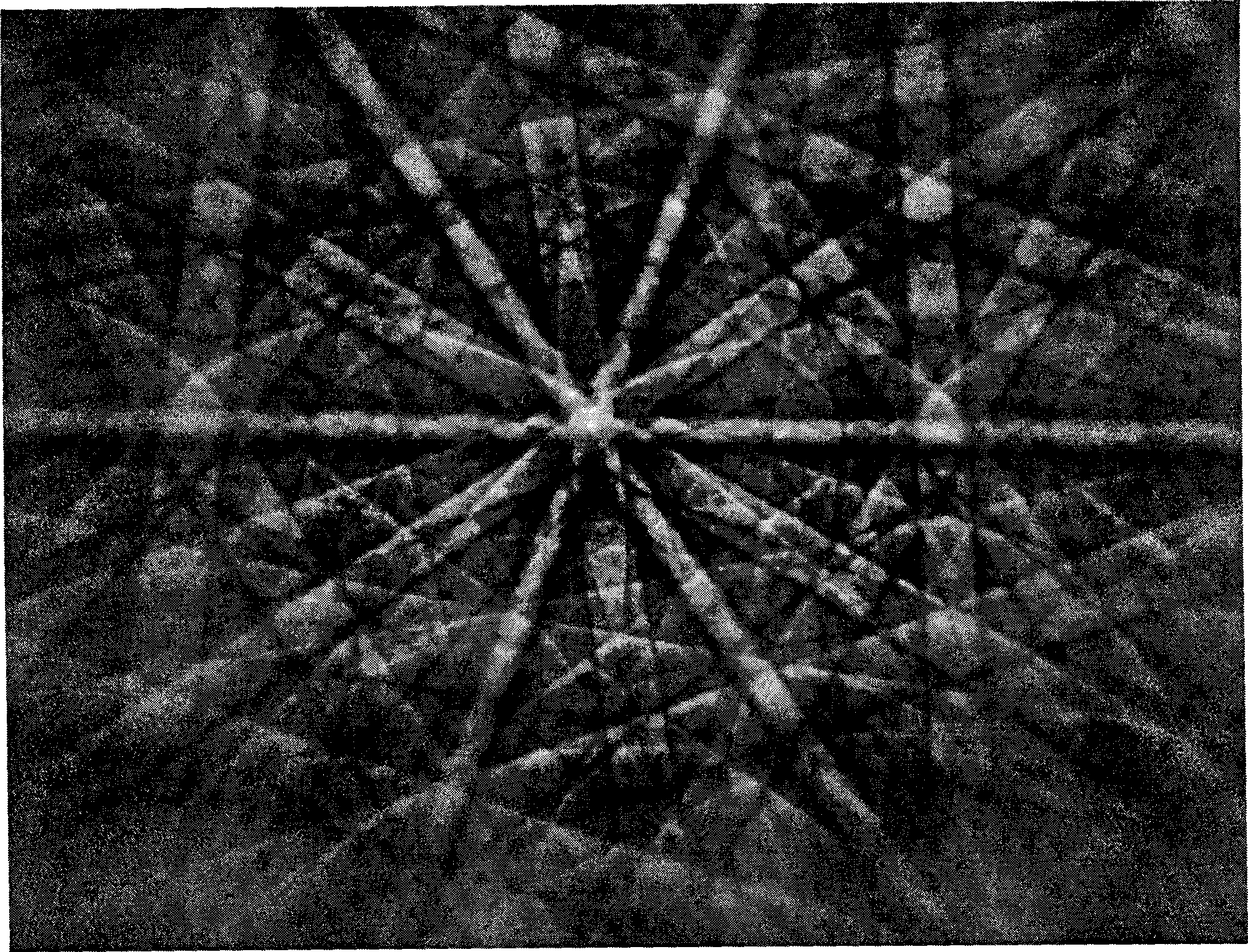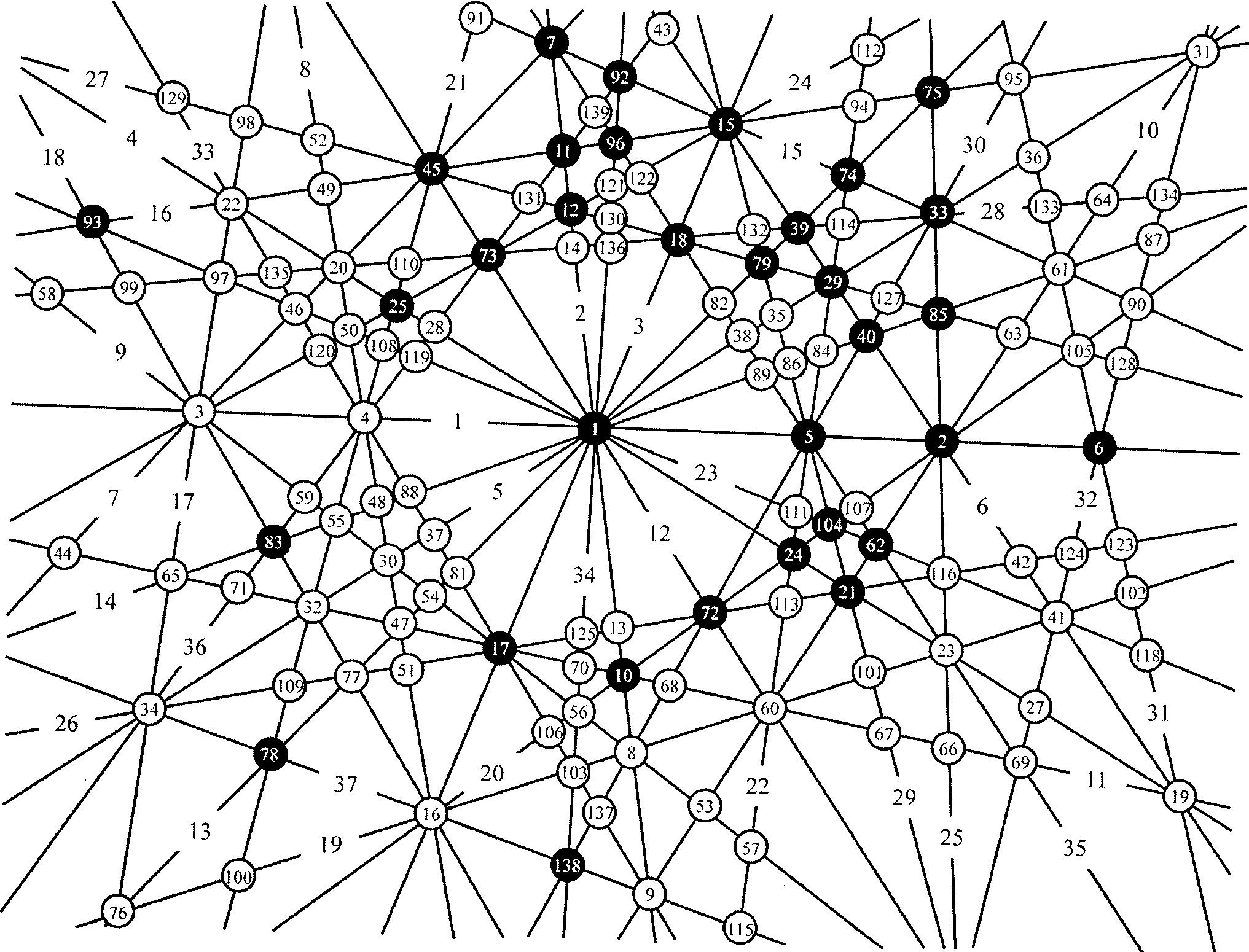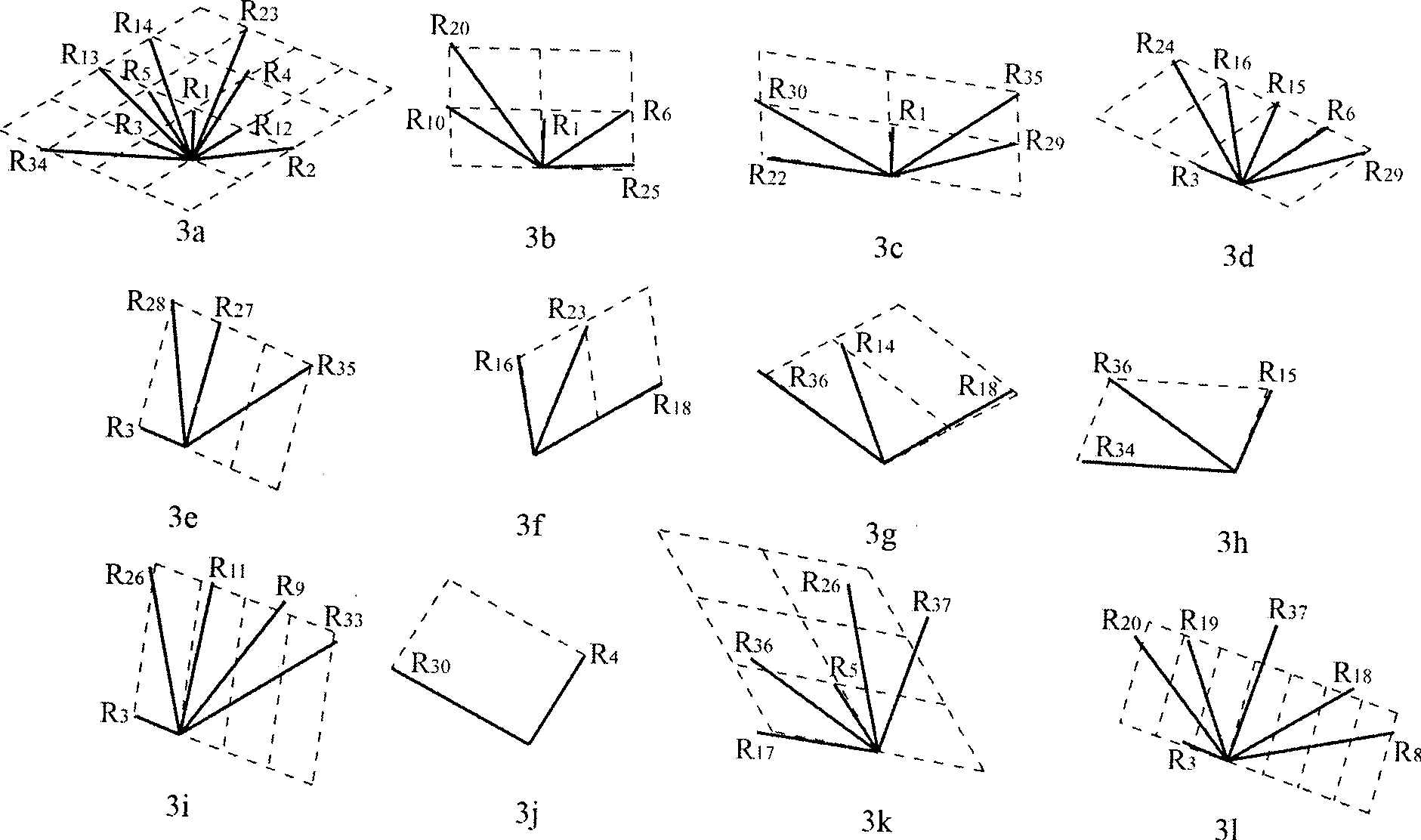Method for determining unknown crystal Bravais lattice by electric back scattering diffraction
A technology of electron backscattering and backscattering diffraction, which is applied to the use of wave/particle radiation for material analysis, measuring devices, instruments, etc., and can solve problems such as the inability to determine the Bravais lattice of unknown crystals
- Summary
- Abstract
- Description
- Claims
- Application Information
AI Technical Summary
Problems solved by technology
Method used
Image
Examples
Embodiment Construction
[0019] Below in conjunction with accompanying drawing this method is described further:
[0020] 1) Obtain the electron backscattered diffraction spectrum, and measure the crystal diffraction information in the diffraction spectrum
[0021] figure 1 The electron backscatter diffraction pattern of the sample to be analyzed is shown. It can be seen from the figure that the electron backscatter diffraction spectrum consists of 37 Kikuchi bands and 139 Kikuchi poles with obvious contrast. figure 2 These Kikuchi poles and Kikuchi belt centerlines and their serial numbers are schematically drawn, and the relationship between the Kikuchi belt and the Kikuchi pole can be directly seen from the figure.
[0022] Table 1 lists the measurement results of the width and azimuth of each Kikuchi zone. When there are multiple bandwidths in one Kikuchi zone, take the smallest width value. The data in the fourth column in the table is calculated from the camera constant and the width of the Ki...
PUM
 Login to View More
Login to View More Abstract
Description
Claims
Application Information
 Login to View More
Login to View More - R&D
- Intellectual Property
- Life Sciences
- Materials
- Tech Scout
- Unparalleled Data Quality
- Higher Quality Content
- 60% Fewer Hallucinations
Browse by: Latest US Patents, China's latest patents, Technical Efficacy Thesaurus, Application Domain, Technology Topic, Popular Technical Reports.
© 2025 PatSnap. All rights reserved.Legal|Privacy policy|Modern Slavery Act Transparency Statement|Sitemap|About US| Contact US: help@patsnap.com



